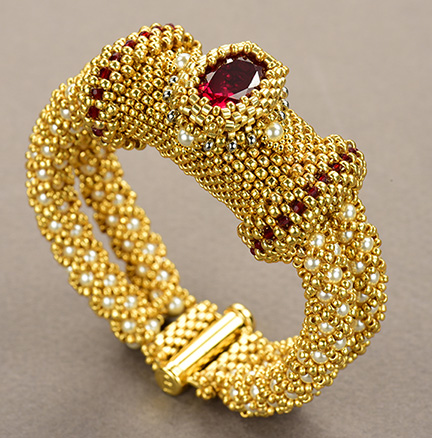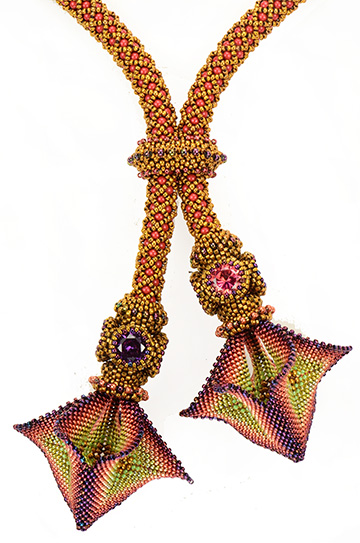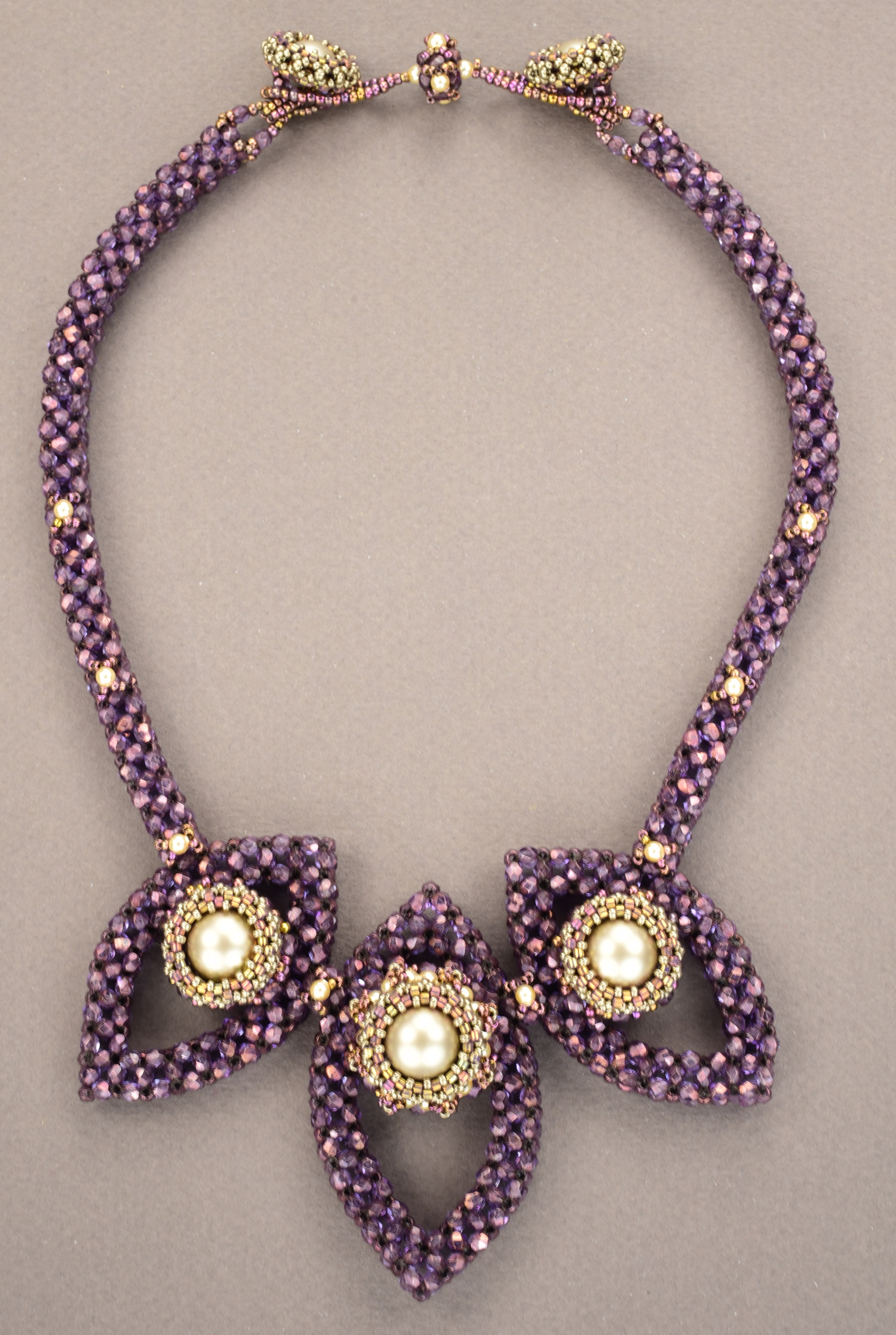Cynthia Rutledge
Thursday - Sunday
November 7 - 10, 2019
We are so pleased Cynthia Rutledge will again return to Anchorage! Projects are on display at Alaska Bead Company.
Classroom Location
1016 W. 6th Avenue, Suite #406 (Note NEW location!)
Corner of 6th & K Street - downtown
(Classroom will be open 30 minutes prior to class start time)
 Jewels of a Maharani
Jewels of a Maharani
Thursday & Friday, Nov. 7 & 8
5:30 to 8:30 p.m.
Class Cost: $100.00
Maharani Sita Devi (1917 - 1989) was known the world over for her extravagant lifestyle as the wife of Maharaja Pratap Singh Gaekwar of Baroda, the 8th richest man in the world in his day.
She was a great beauty with a love for fine jewelry. She was high society, very popular and extremely outgoing in her ways. Sita Devi showed off her jewelry in a non-tradition Indian way. Even though she wore fabulous saris, she would make sure that the beautiful fabrics didn't cover up any of the jewels being worn, and, her head was usually uncovered. She even smoked in public!
The Maharani was a regular customer of Harry Winston, Cartier and Van Cleef and Arpels. Sita Devi was also the proud owner of the famous seven-strand Basra Pearl necklace, the 34.65-carat Princie Diamond (one of the largest pink diamonds ever found valued at 40 million dollars), the Dresden (78.5 carats) and the Star of the South diamonds (128.48 carats).
Jewels of a Maharani was inspired by the style of jewelry known as Kundan. The word, Kundan, means "pure gold". The process is to make a thin gold foil that either sits between the gemstone and the mount to reflect light or the foil is pressed and molded around the edge of the gemstone or pearl. It is one of the oldest forms of jewelry made and worn in India.
In the case of this design, an oval CZ is bezeled and mounted on top of a shaped tubular structure. Two netted pearl ropes, evoking the style of Kundan, pass through the main terminal focal piece and end in a sliding clasp.
Skill level: Intermediate to advanced
Techniques:
Tubular, even-count peyote stitch with shaping
Flat circular peyote stitch with increasing
Flat, odd-count, peyote stitch using step up/step-down techniques
Tubular filled netting
Embellishing techniques
Kits will be available for purchase on day of class
 A Cut Above -- Class is full!
A Cut Above -- Class is full!
Saturday, Nov. 9
10 a.m. to 5 p.m.
Class Cost: $100.00
Antoni Gaudí was the greatest exponent of Catalan modernism of all time. Gaudí's one-of-a-kind style, led to his creation of numerous architectural wonders in and around Barcelona, Spain. One of the most famous structures is The Basilica of the Sagrada Familia, exhibiting how the art of man can reach to the sky!
A Cut Above, was inspired by two different aspects of the work of Antoni Gaudí. The first, being the architectural flowing shapes, arches and spires of his work. The second, was to capture the essence of his use of color and light. Each tassel consists of three shaped components, laced together to form "windows" of color and structure. At the top of each of the tassels is a four-sided CZ beaded bead, reflecting light as it is worn. The chain is a filled-netting, evoking the style of leaded glass, and ending is a sliding clasp.
Skill Level: Intermediate to advanced
Necklace length: 25.5 inches from the tip of one tassel to the tip of the other tassel
Techniques:
Bezel work
Flat peyote stitch with increasing
Filled netting
Stitching-in-the-ditch
Tubular peyote stitch with decreasing
Kits will be available for purchase on day of class
 Feathers of the Peacock
Feathers of the Peacock
Sunday, November 10
10 a.m. to 5 p.m.
With its iridescent feathers and decadent beauty, it is no wonder that the peacock has been the focus of inspiration for many designers, back to ancient times. The allure of these fabulous birds crossed all cultures, from fashionable European designers, creating amazing works of art, to the influence of Japanese designers, creating stunning embroidered kimonos.
Regarded by many cultures as a symbol of wealth, beauty and rebirth, peacocks were also a symbol of royalty. Indian rulers would have servants cool them with peacock feather fans. Japan regarded Peacocks as a symbol of dignity and beauty. Images of these beauties can also be found in early Christian tomb art, and were a favorite motif in ancient Rome and Byzantium.
Feathers of the Peacock is my interpretation of a more contemporary approach to a timeless inspiration, the peacock. Three “feather” shapes are filled with embellished Swarovski pearls and linked together for a fabulous focal point. All of the feather shapes and the necklace straps are created in cubic right-angle weave. The pearl embellishments, buttons and the necklace connector utilize peyote stitch, netting and embellishing techniques.
Skill Level: Intermediate to advanced
Necklace length: 17.5 inches long from the tip of the necklace connector to the opposite button.
Techniques:
Cubic right angle weave
Embellishing techniques
Flat and tubular peyote stitch
Netting
Kits will be available for purchase on day of class

 About Cynthia Rutledge . . .
About Cynthia Rutledge . . .